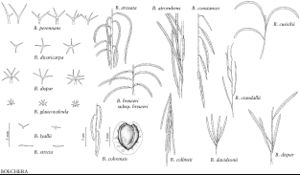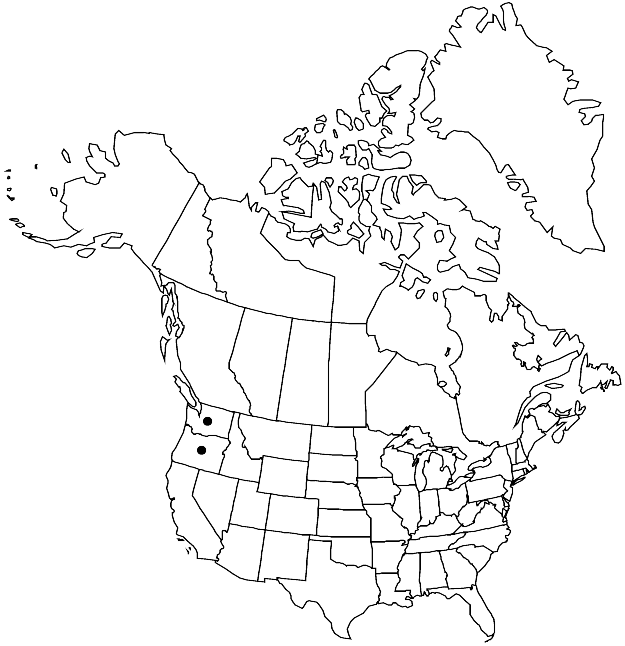Difference between revisions of "Boechera atrorubens"
Harvard Pap. Bot. 11: 64. 2006.
FNA>Volume Importer |
FNA>Volume Importer |
(No difference)
| |
Revision as of 20:22, 24 September 2019
Perennials; usually short-lived; sexual; caudex not woody. Stems usually 1 per caudex branch, arising from center of rosette near ground surface, 0.8–6 dm, sparsely pubescent proximally, trichomes short-stalked and simple, (scattered), 2-rayed, 0.1–0.15 mm, glabrous distally. Basal leaves: blade oblanceolate, 4–10 mm wide, margins usually dentate, not ciliate, surfaces densely pubescent, trichomes short-stalked, 3- or 4-rayed, 0.1–0.2 mm. Cauline leaves: 7–25, concealing stem proximally; blade auricles 1–4 mm, surfaces of distalmost leaves glabrous. Racemes 6–20-flowered, usually unbranched. Fruiting pedicels ascending, usually straight, 5–10 mm, glabrous or pubescent, trichomes spreading, simple. Flowers ascending at anthesis; sepals pubescent; petals dark reddish purple (drying indigo), 7–9 × 1.5–2 mm, glabrous; pollen ellipsoid. Fruits ascending, not appressed to rachis, not secund, curved or straight, edges parallel, (4–)6–12 cm × 1.7–2.2 mm; valves glabrous; ovules 80–100 per ovary; style 0.2–0.5 mm. Seeds uniseriate, 1.2–1.7 × 0.9–1.2 mm; wing lateral and distal, 0.1–0.2 mm wide.
Phenology: Flowering Apr–May.
Habitat: Rocky summits and sandy loam on sagebrush slopes
Elevation: ca. 600 m
Discussion
Boechera atrorubens is often treated as a variety of B. sparsiflora (e.g., R. C. Rollins 1993), it is readily separated from that species by having proximal stems sparsely (versus densely) pubescent with much smaller (0.15 versus 1.5 mm) trichomes. The two taxa rarely grow in proximity and, in areas where they are sympatric, B. atrorubens is further distinguished by its narrower (1.5–2 versus 2–5 mm) petals that are dark reddish purple to indigo (versus lavender or white).
Selected References
None.

